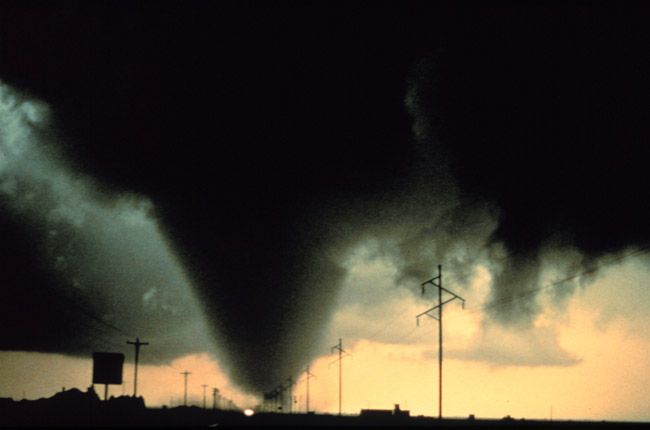Is Climate Change Causing the Record-Breaking Tornadoes & Floods?

Already this year, nearly 1,200 tornadoes have crisscrossed Tornado Alley, killing nearly 500 people and leaving thousands more homeless. Meanwhile, twice as much rain fell in several states in the Ohio Valley this April than during any other April on record. It produced extreme floods in May, swelling the Mississippi River to a record depth of 60 feet.
Many people are wondering: Is climate change to blame for the extreme weather?
The tornadoes
Several studies have investigated the relationship between global warming and the vicious tornado outbreaks. They've all given the same answer: "The data is inconclusive."
"So far, we have not been able to link any of the major causes of the tornado outbreak to global warming," Martin Hoerling, a National Oceanic and Atmospheric Administration (NOAA) research meteorologist, and his research team recently announced.
Where tornadoes are concerned, inconsistent record keeping — made more difficult by the fact that the storms are relatively small and often last for only minutes — makes it hard to say whether there are more of them now than there used to be. In recent years, the use of radar tracking, spotter networks and higher populations "all contribute to an artificial upward trend in tornado data, especially for smaller tornadoes," Hoerling, who works at the Earth Systems Research Laboratory in Boulder, Colo., told Life's Little Mysteries, a sister site to LiveScience. "Those are becoming more frequently reported not because there are more of them but because there are more eyes looking for them. That creates some complications in doing a historical analysis."
Setting the spotty historical record aside, researchers have started investigating whether global warming might be conducive to conditions that are favorable for tornadoes. Thermodynamic instability, the condition that causes thunderstorms by forming vertical clouds, combined with wind shear, which stabilizes the updraft and causes it to rotate, are the "perfect storm" that leads to a funnel. Does global warming amplify these conditions?
Sign up for the Live Science daily newsletter now
Get the world’s most fascinating discoveries delivered straight to your inbox.
Global warming does indeed increase the moisture content of the air (because hotter air holds more moisture), which increases the likelihood of vertical clouds forming.
However, those vertical clouds won't turn into tornadoes without the wind shear, and "the expectation is that there will be less of that wind shear with global warming," said David Easterling, chief of the Global Climate Applications Division at NOAA's National Climatic Data Center. "Part of it is because you have an expansion of the tropical climate regime up into the higher latitudes," and in the tropics, there is less wind shear. [Read: Redesigned Roofs Withstand Tornadoes and Hurricanes ]
So with one tornado-conducive factor being increased and the other being decreased, it's really hard to say how global warming affects tornado activity. But scientists are still looking into it. "Inconclusive data does not lead you to conclude that there's no evidence of a connection," Hoerling said.
The floods
As for the crazy flooding, scientists say that may well be caused, at least in part, by global warming.
"The flooding and the heavy rainfall are consistent with what we expect with global warming. Looking at some of the modern trends, we've seen increases in the amount of water vapor in the atmosphere, drawing a direct link between what's happening in the Midwest and global warming," Easterling said.
There have always been floods, and global warming cannot be blamed for any single event, the scientists explained. Overall, though, there is probably more flooding than there used to be.
This article was provided by Life's Little Mysteries, a sister site to LiveScience. Follow Natalie Wolchover on Twitter @nattyover.
Natalie Wolchover was a staff writer for Live Science from 2010 to 2012 and is currently a senior physics writer and editor for Quanta Magazine. She holds a bachelor's degree in physics from Tufts University and has studied physics at the University of California, Berkeley. Along with the staff of Quanta, Wolchover won the 2022 Pulitzer Prize for explanatory writing for her work on the building of the James Webb Space Telescope. Her work has also appeared in the The Best American Science and Nature Writing and The Best Writing on Mathematics, Nature, The New Yorker and Popular Science. She was the 2016 winner of the Evert Clark/Seth Payne Award, an annual prize for young science journalists, as well as the winner of the 2017 Science Communication Award for the American Institute of Physics.












